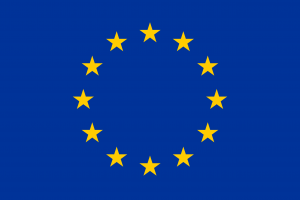Creating a Drinking Place for Wildlife: A Case Story from Mwabvi Wildlife Reserve

During the dry season, wild animals tend to migrate to the nearest communities and other forests reserves such as Matandwe Forest Reserve which is adjacent to Mwabvi in search of water where they risk of being killed by poachers as the level of security in this Matandwe forest is not as adequate since the level of law enforcement is different. Records show that cases of poaching are high during the dry season because of these movements as evidenced from Mwabvi Wildlife Reserve Annual reports as well as annual game count reports for Mwabvi Wildlife Reserve.
Thanks to the European Commission in Malawi for funding the three-year project called “Building Climate Resilient Communities around Wildlife Protected Areas” some positive changes can be seen in Mwabvi Wildlife Reserve. For instance, the project, led by Trócaire, in collaboration with four Consortium partner organisations; Youth Net and Counselling (YONECO), Circle for Integrated Community Development (CICOD) and Civil Society Network on Climate Change (CISONECC) and Churches, Action, Relief and Development (CARD) supported the drilling and installation of a Solar Powered drinking system for wild animals inside Mwabvi Wildlife Reserve. The Project is targeting five communities (GVHs) around Mwabvi Wildlife Reserve namely, Kanyimbi, Kambelengende (from TA Tengani), Mkotamo, Nyajidu and Chithumba (from TA Mbenje) in Nsanje.
Since the construction of the Nambira wildlife drinking place, animal security and visibility has greatly improved in the Reserve. Animals no longer travel long distances in search of water in other areas, especially during the dry season which has reduced their vulnerability to angry poachers. The Nambira Wildlife drinking water point is found about 3 kilometers from the Mwabvi Wildlife Reserve entrance located inside the reserve and consists of a solar panel tower, submersible pump, and a tap for the Reserve’s rangers. It took the close collaboration of CARD officers lead by Mr Charles Msowoya and the experienced Senior Patrolling Officer Mr Alfonso Zakariya to identify the right spot for drilling by using existing data and observing specific Plant species (Napier Grass, Mahogany tree, and Mahogany bean) to identify none saline ground water for animals. Instead of creating a water pool made of concrete, the ground water which is pumped, flows by gravity on a water way during the day when there is solar radiation, creating a natural wet land, to avoid disturbing the natural ecosystem.
The water descends for about 100m which was initially a desert like place and has now been transformed into a wetland which provides water and food for the animals. Since its installation in May 2021, the surrounding area has improved quite a lot with water being found throughout the year and wetland grasses such as the typha grass and other indigenous flora now flourishing around the stretch of the pool. This in turn prevents the animals from migrating to the nearest unprotected forest nor to the rivers close to villages where they are prone to poaching.
As evidenced, since the solar power pump operation, the Department of Parks and Wildlife have recorded an increase in animal species sightings for species such as Impalas, Common Duiker, Suni, Kudu and Buffaloes and according to Wildlife Reserve Officials, the number of animals patronizing the place is estimated to be more than 200 animals per week during the hottest season.
The drinking area is also being used to keep safe some of the endangered animals since it is one of the highly protected areas in the Reserve. In 2021 December, the Reserve officials brought in a Pangolin, locally known as Ngaka in Chichewa and Nkhaka in Sena-(Nsanje local language), one of the endangered species and mostly wanted by Chinese; believed to be medicinal and useful in rituals. This Pangolin was found in the communities in the area of Senior Chief Tengani by community members and the incident was later reported to the Reserve. Then the Pangolin was taken and released at the Nambira wildlife drinking point from which it drunk water and regained its strength since it was highly dehydrated.
The solar powered borehole installed is not enough to cater for all the wild animals in the Reserve according to Mr. Brave Madise, Reserve Manager for Mwabvi. He echoed that at least three more of these solar powered boreholes would be ideal for the Reserve. The system costed MWK 7,163,308 million and has low maintenance cost and a life span of 10-15 years. So far Mwabvi Wildlife Reserve is not involved in intensive tourism, but plans are in the pipeline and of course an increase in animals would also help in this regard. CARD officers and the Parks Officials were trained by the Installers on the operation and maintenance of the system for sustainable use of the system beyond the life of the project.
Trócaire, partners, and the Department of Wildlife and Parks acknowledge the funding from the European Union for the Project on ‘Building Climate resilient Communities around Wildlife Protected Areas’ which has made this work possible.





